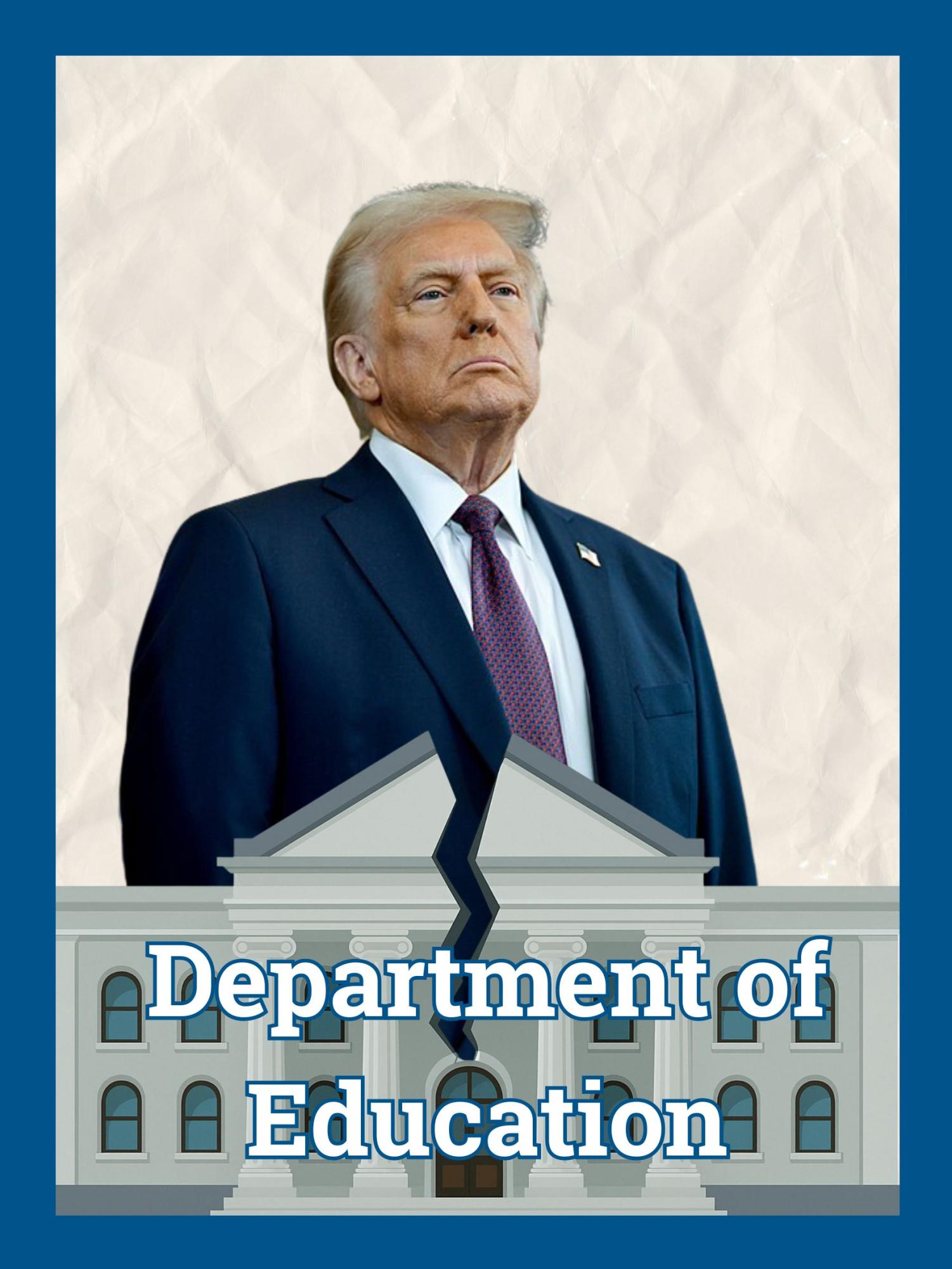President Donald Trump has begun his attempt to eliminate the U.S. Department of Education. On March 20, Trump signed an Executive Order directing the Department of Education to shift most of its programs to state and local governments, a major change in how the federal government runs education programs.
The Executive Order keeps crucial programs such as Title I funding for low-income schools, Pell Grants, which are federal subsidies that help low-income students pay for college and services for students with disabilities, including special education support. Other programs that were previously housed in the Department of Education, including the administration of Federal Student Loans, will be transferred to other agencies such as the Small Business Administration. School nutrition programs and special education programs will be moved to the Department of Health and Human Services, according to the Associated Press.
Even after Trump’s executive order, a full elimination of the Department of Education will require a Congressional vote, which is not guaranteed due to how divided the Senate is.
The Department of Education, created in 1980 by former President Jimmy Carter, set national education standards, handled student financial aid and enforced student civil rights. Abolishing it completely would be one of the largest changes to a federal agency in years.
Ethan Nsubuga, a freshman who recently transferred to Lincoln, does not support the dismantling of the Department of Education.
“I wasn’t surprised, I was disappointed,” said Nsubuga. “We’re in school. We need education to get a job. If we don’t have education, we won’t end up having as good of a life.”
Trump’s decision is supported by his defenders, who claim the federal government has too much power over education. Supporters like the conservative Heritage Foundation say the decision is a sound idea as it would lower federal spending and further empower parents to control their children’s education.
People who support keeping the Department of Education caution that eliminating it would make disparities worse, especially for students who rely on the support from programs sponsored by the department, like Pell Grants.
Staff at Lincoln are particularly concerned about the loss of federal protections.
“The uncertainty is uncomfortable. I’m concerned for students and what it means for education as a whole,” said Melissa Monroe, a qualified mental health professional at Lincoln.
Students at Lincoln have had strong reactions, with some uncertain and others anxious about the future of public schools.
“It’s just a negative change to education. Schools in America are already showing us that students aren’t really prepared for college. Their grades are dropping, students are getting lazier and removing the Department of Education will only contribute to that issue,” said sophomore Oskar Reynolds-Kienbaum.
The future of the Department of Education is still uncertain, but future policies may have a profound impact on the way education functions in the U.S.
“We need some guidance and some oversight and some structure. The uncertainty leads me to believe that people will run with their own ideas, which doesn’t always benefit the greater population,” said Monroe.


